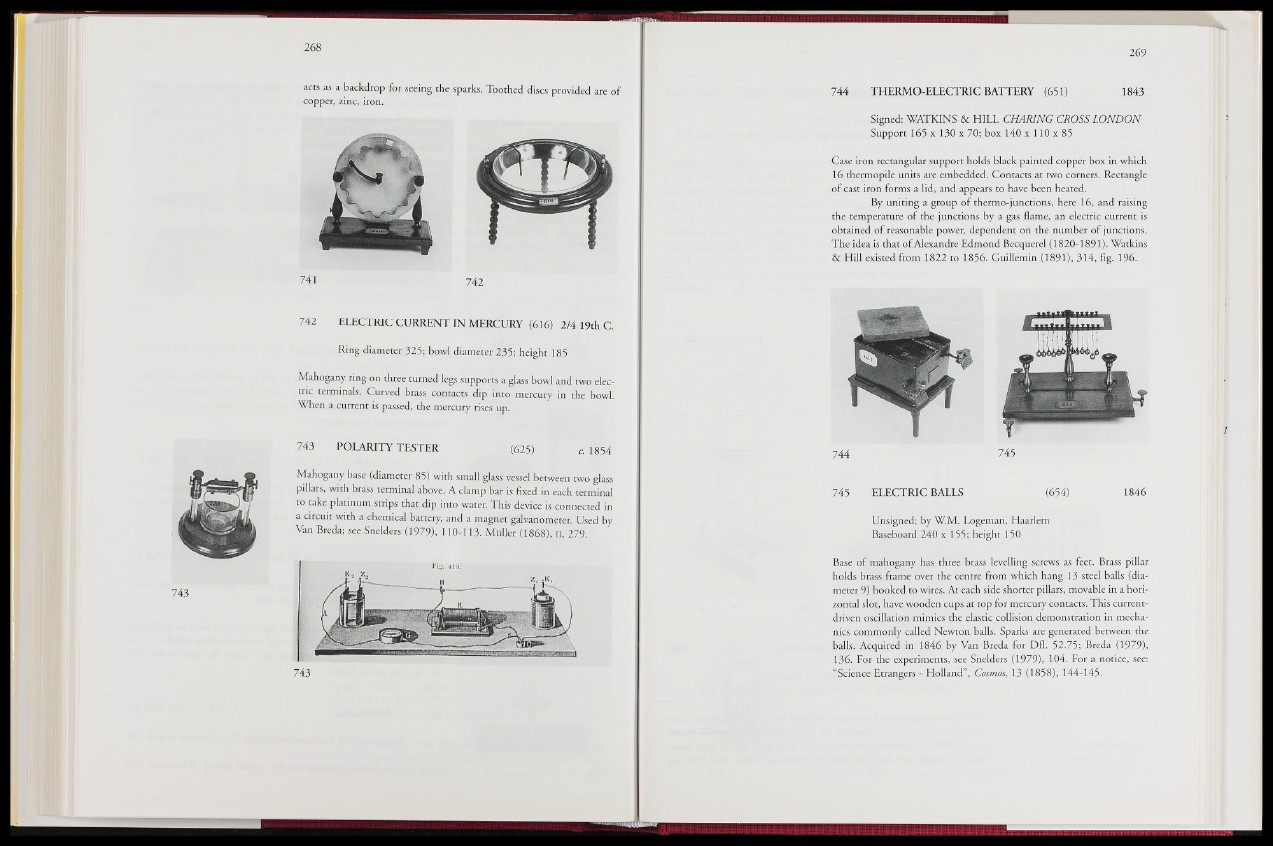
acts as a backdrop for seeing the sparks. Toothed discs provided are of
copper, zinc, iron.
742 ELECTRIC CURRENT IN MERCURY (616) 2/4 19th C.
Ring diameter 325; bowl diameter 235; height 185
Mahogany ring on three turned legs supports a glass bowl and two electric
terminals. Curved brass contacts dip into mercury in the bowl.
When a current is passed, the mercury rises up.
743 POLARITY TESTER (625) c. 1854
Mahogany base (diameter 85) with small glass vessel between two glass
pillars, with brass terminal above. A clamp bar is fixed in each terminal
to take platinum strips that dip into water. This device is connected in
a circuit with a chemical battery, and a magnet galvanometer. Used by
Van Breda; see Snelders (1979), 110-113. Müller (1868), II, 279.
744 THERMO-ELECTRIC BATTERY (651) 1843
Signed: WATKINS & HILL CHARING CROSS LONDON
Support 165 x 130 x 70; box 140 x 110 x 85
Case iron rectangular support holds black painted copper box in which
16 thermopile units are embedded. Contacts at two corners. Rectangle
of cast iron forms a lid, and appears to have been heated.
By uniting a group of thermo-junctions, here 16, and raising
the temperature of the junctions by a gas flame, an electric current is
obtained of reasonable power, dependent on the number of junctions.
The idea is that of Alexandre Edmond Becquerel (1820-1891). Watkins
& Hill existed from 1822 to 1856. Guillemin (1891), 314, fig. 196.
744 745
745 ELECTRIC BALLS (654) 1846
Unsigned; by W.M. Logeman, Haarlem
Baseboard 240 x 155; height 150
Base of mahogany has three brass levelling screws as feet. Brass pillar
holds brass frame over the centre from which hang 13 steel balls (diameter
9) hooked to wires. At each side shorter pillars, movable in a horizontal
slot, have wooden cups at top for mercury contacts. This current-
driven oscillation mimics the elastic collision demonstration in mechanics
commonly called Newton balls. Sparks are generated between the
balls. Acquired in 1846 by Van Breda for Dfl. 52.‘75; Breda (1979),
136. For the experiments, see Snelders (1979), 104. For a notice, see:
“Science Etrangers -gffiolland”, Cosmos, 13 (1858), 144-145.